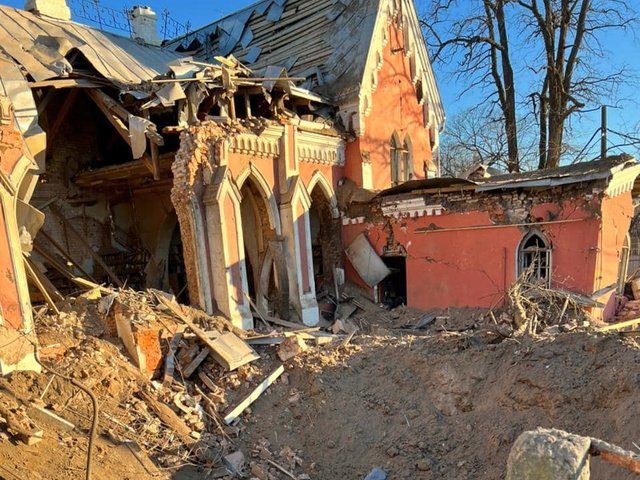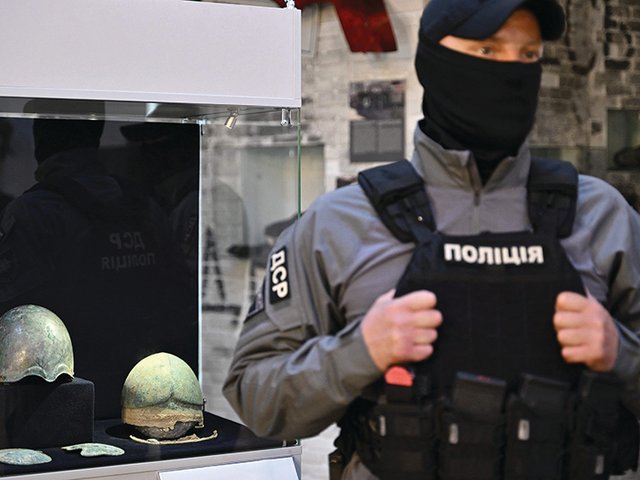Curators at the National Museum of the History of Ukraine in Kyiv are defying the Russian invasion by drawing parallels with earlier times. Despite the struggles of everyday life in the threatened capital, they are bravely signing their names to a series of online articles about historic objects that may resonate with war-torn Ukraine today.
The highlighted objects include a 1629 crossbow. A museum curator describes how it would have been used by a 17th-century “sniper”, concluding: “We want our snipers to hunt down the northern hordes that organise the genocide of Ukrainians. Stand firm and win!”
Another text centres on a bejewelled cross from 1720 that previously belonged to the Church of St Nicolas the Good in Kyiv, which was destroyed by the Bolsheviks in 1935. A curator writes that “the current bombing of religious buildings once again reminds us that Ukraine is at war not only with terrorists, but also with a barbaric state”. He adds: “It is much easier to destroy historical monuments than to erase knowledge about them.”
Since the museum opened in 1899 it has undergone 13 changes of name, an indication of the political turmoil that Ukraine has endured. One museum director, Danylo Shcherbakivsky, was so devastated by the loss of artefacts under Stalin that he took his life in 1927. The collection also suffered terribly during the Second World War.
In 1991, with Ukraine’s independence, the museum assumed its present name. Its 800,000 objects (with 22,000 normally on display) range from one-million-year-old flint tools to contemporary items. The museum closed to visitors at the time of the invasion. Most of the exhibits were quickly removed and are now hidden in secure storage. Considering Ukraine’s turbulent past, such necessary precautions have been carefully planned.
St John Simpson, a curator for Central Asia at the British Museum in London, has been in regular contact with Fedir Androshchuk, the director of the Kyiv museum, since the war began. Simpson says that he is “confident that they are doing everything they can to implement their disaster plan”. Discussions are under way to arrange a delivery of supplies from the British Museum to Kyiv.
Simpson’s message of support to Androshchuk, posted on the museum’s website, refers to another link between the two institutions. Simpson wrote: “Last year, our [UK] Border Force seized a small package of early medieval pendants and other small objects which was posted from your country. We are holding it here and when the time is right, we will repatriate it to your museum. It will be a small symbol of the reconstruction that lies ahead, and let us hope that that moment is sooner rather than later.”






